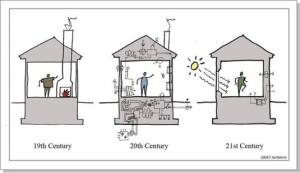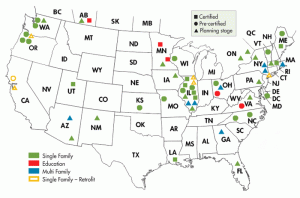Ετσι μπλοκάρουν την έρευνα για τα πετρέλαια της Κρήτης
 |
Κοιτάσματα φυσικού αερίου που θα μπορούσαν να προσφέρουν ενεργειακή αυτονομία στο νησί έχει η Κρήτη, σύμφωνα με τις έρευνες που διεξάγει σε Μεσαρά και Γαύδο ομάδα επιστημόνων από το Πανεπιστήμιο Πατρών και το Πολυτεχνείο Κρήτης.
Το ενδιαφέρον στρέφεται και στην Ιεράπετρα αφού σε πολλά σημεία του νησιού εντοπίζονται λεκάνες υδρογονανθράκων με μεγάλη δυναμική.
Ο καθηγητής Α. Ζεληλίδης μιλά για τις έρευνες σε Γαύδο και Μεσαρά και το ρόλο του κράτους και αποκαλύπτει
 |
Της Κατερίνας Μυλωνά
Στα... ίχνη φυσικού αερίου και πετρελαίου από τη Γαύδο ως την Ιεράπετρα βρίσκονται επιστήμονες! Ο καθηγητής του τμήματος Γεωλογίας του Πανεπιστημίου Πατρών, κ. Αβραάμ Ζεληλίδης, μιλά στην «Π» για τις έρευνες που γίνονται στην Κρήτη, αρχικά στη Μεσαρά, στη συνέχεια στη Γαύδο και έπονται στην Ιεράπετρα, και τα στοιχεία που δείχνουν ότι το νησί μπορεί να παίξει καθοριστικό ρόλο στο παιχνίδι της ενέργειας.
Το πρόβλημα, δυστυχώς, είναι ότι, όπως καταγγέλλει ο καθηγητής, η Πολιτεία όχι μόνο αδιαφορεί αλλά θέτει και εμπόδια στο δρόμο των ερευνητών.
Εναυσμα από Μεσαρά
Όπως είχε γράψει η «Π» πριν από ένα χρόνο, στον πρώην δήμο Αρκαλοχωρίου υπάρχουν γεωτρήσεις που μένουν αναξιοποίητες λόγω έλλειψης χρηματοδότησης.
Τότε, ο κ. Ζεληλίδης είχε δηλώσει πως «υπάρχουν πλέον όχι μόνο οι εκτιμήσεις αλλά και σαφείς ενδείξεις ότι υπάρχει κοίτασμα στη λεκάνη της Μεσαράς και μπορούμε να βάλουμε σε ένα γενικότερο γεωλογικό πλαίσιο όλη την περιοχή και να την συνδέσουμε με την γεωλογική εξέλιξη της ευρύτερης περιοχής μέχρι τη Γαύδο».
 |
Συνέχεια στη Γαύδο
Όπως και έγινε γιατί επιστήμονες από το Πανεπιστήμιο Πάτρας, σε συνεργασία με το Πολυτεχνείο Κρήτης, βρέθηκαν στη Γαύδο το προηγούμενο καλοκαίρι.
Από τις έρευνες έχει προκύψει πως στην Κρήτη υπάρχουν λεκάνες υδρογονανθράκων με πολύ μεγάλη δυναμική.
«Νότια της Κρήτης, αναπτύσσεται ένα υποθαλάσσιο βουνό, που ονομάζεται μεσογειακή ράχη. Αυτή η ράχη, ξεκινώντας από τη Ζάκυνθο και φτάνοντας μέχρι την Κύπρο έχει ένα μήκος 1.500 χιλιομέτρων και ένα μέσο πλάτος 150 με 200 χιλιομέτρων. Νότια της Κρήτης και στην προέκταση της Γαύδου προς τη Λιβύη, πάνω σε αυτό το υποθαλάσσιο βουνό έχουν εντοπιστεί ηφαίστεια λάσπης, εξαιτίας της διαφυγής μεθανίου»,αναφέρει ο κ. Ζεληλίδης.
Όπως αναφέρει, μεταξύ αυτού του υποθαλάσσιου βουνού και της Γαύδου υπάρχει μία λεκάνη, όπως υπάρχει και μία μεγαλύτερη λεκάνη μεταξύ της Γαύδου και του Τυμπακίου, αυτή λέγεται λεκάνη της Γαύδου, και νοτιότερα της Γαύδου υπάρχει μια λεκάνη που λέγεται Γόρτυνος. Επίσης, νότια της Ιεράπετρας υπάρχουν άλλες τέσσερις λεκάνες, του Πτοτελεμαίου, του Ποσειδώνα, του Πλείνιου και του Στράβωνα.
«Αυτές οι τέσσερις λεκάνες είναι ανάλογες, ίσως και μεγαλύτερες της Γαύδου. Τροφοδοτούνται και συνδέονται με την εξέλιξη της λεκάνης της Ιεράπετρας, η οποία είναι στον επόμενο στόχο μας για μελέτη», εξηγεί ο καθηγητής.
Οι έρευνες που είχαν γίνει το προηγούμενο διάστημα στη Μεσαρά έδειξαν στους επιστήμονες τον τρόπο εξέλιξης, «όλες εκείνες τις πληροφορίες για να μπορέσουμε να μιλήσουμε με τόση σιγουριά, πλέον, ότι αυτές οι πέντε λεκάνες κρύβουν μεγάλα κοιτάσματα και τα κρύβουν γιατί τα πετρώματα που συγκεντρώθηκαν σε αυτές τις λεκάνες είναι πλούσια σε οργανικό υλικό. Και αν η λεκάνη της Μεσαράς μπορεί να μας δώσει μόνο βιοαέριο, γιατί το πάχος των ιζημάτων είναι μικρό και δεν προλαβαίνουν να ωριμάσουν για να δώσουν πιο πλούσια κοιτάσματα, αυτές οι πέντε λεκάνες που είναι σήμερα κάτω από το νερό έχουν μεγάλο πάχος ιζημάτων, μεγάλο βάθος ταφής και μπορούν να δώσουν μεγάλες ποσότητες υδρογονάνθρακα», τονίζει ο καθηγητής.
Παράλληλα, επισημαίνει πως νοτιοανατολικά της Κρήτης υπάρχει και η λεκάνη του Ηροδότου, η οποία συνδέεται με την Αίγυπτο.
“Ενεργειακά αυτόνομη όλη η Ευρώπη για 50 χρόνια από την αξιοποίηση των ελληνικών κοιτασμάτων&
Ο κ. Ζεληλίδης θεωρεί πως αν αξιοποιηθούν όλα τα κοιτάσματα στον ελληνικό χώρο, όχι μόνο της Κρήτης, τότε θα εξασφαλιστεί η ενεργειακή αυτονομία της Ευρώπης για τα επόμενα 50 χρόνια.
Για παράδειγμα, έρευνες του ΕΛΚΕΘΕ νότια του Καστελόριζου έδειξαν ότι τα κοιτάσματα μπορούν να δώσουν πέντε τρις κυβικά μέτρα μεθανίου, η λεκάνη της Λεβαντίνης (μεταξύ Κύπρου, Συρίας και Λιβάνου) υπολογίζεται ότι δίνει τρία τρις και του Ηροδότου εκτιμάται στο ίδιο επίπεδο.
Όσο αφορά στις μελέτες που γίνονται στην Κρήτη, σε συνεργασία με το Πολυτεχνείο Κρήτης, εκπονείται ήδη μια διδακτορική διατριβή στη λεκάνη της Μεσαράς και τη Γαύδο αλλά και μία διατριβή για το παλαιοκλίμα προκειμένου να υπάρξει σύνδεση με την παραγωγή του οργανικού υλικού, τέλος, γίνονται δύο μάστερ που εκπονούνται στη λεκάνη στη Γαύδο.
«Η κυριότερη επιστημονική μας δραστηριότητα είναι στη λεκάνη της Μεσαράς και τη Γαύδο, θεωρούμε ότι είναι κλειδί και απάντηση σε αυτά που θέλουμε να πούμε. Είναι από τις λίγες περιοχές που έχουν επιφανειακές εμφανίσεις, εμείς δεν έχουμε τη δυνατότητα να δουλεύουμε υποθαλάσσια, δουλεύουμε στη χέρσο.
Με βάση τα αποτελέσματα των μελετών μας παράγονται κάποια μοντέλα για το πώς δημιουργείται η λεκάνη και τι δυναμική έχει. Τέτοιες ιδανικές συνθήκες δεν έχουμε σε άλλες περιοχές, να έχουμε, δηλαδή, τα όρια μιας λεκάνης και νότια στη Γαύδο και βόρεια στη Μεσαρά», αναφέρει.
Ετοιμάζεται, επίσης, μια μελέτη για να εκτιμηθούν τα κοιτάσματα στη λεκάνη της Γαύδου, θα ακολουθήσει έρευνα στην Ιεράπετρα για να συνδεθούν οι λεκάνες του Πλείνιου και του Στράβωνα.
Τα πρώτα αποτελέσματα αναμένεται να ανακοινωθούν εντός του έτους ενώ τους επόμενους μήνες θα επιστρέψουν στην Κρήτη οι ερευνητές.
“Η ελληνική πολιτεία δεν αντιδρά”
Ο κ. Ζεληλίδης θεωρεί πως όλα τα παραπάνω πρέπει να ερευνηθούν ενδελεχώς και να ξεκινήσει η αξιοποίησή τους. Υπάρχει, όμως, ένα σοβαρό πρόβλημα.
«Οι ξένοι γνωρίζουν τι συμβαίνει, το θέμα είναι ότι η ελληνική πολιτεία δεν αντιδράει. Όταν η Λιβύη αμφισβητεί τη Γαύδο, αυτόματα η ελληνική κυβέρνηση απεμπολεί το δικαίωμα πάνω σε αυτό το υποθαλάσσιο βουνό που έχει μεγάλα κοιτάσματα και μεγάλη δυναμική.
Όταν η ελληνική πολιτεία αμφισβητεί ή -αν θέλετε- δε διευκρινίζει τα όρια με την Αίγυπτο, αυτόματα απεμπολεί το δικαίωμα στη λεκάνη του Ηροδότου.
Άρα θεωρώ ότι η Κρήτη μπορεί να παίξει ένα καθοριστικό ρόλο ως προς τα όρια μας σε σχέση με τη Γαύδο, από την ύπαρξη των έξι μεγάλων αυτών λεκανών με πολύ μεγάλη δυναμική, δημιουργώντας τις συνθήκες παραγωγής υδρογονανθράκων για όλη την Ευρώπη, όχι μόνο για την Κρήτη», τονίζει.
Επιπλέον, αναφέρει πως ο αγωγός Κύπρου- Ευρώπης θα περάσει με πρώτο σταθμό την Κρήτη.
«Είναι οι τρεις παράγοντες που θα δώσουν δυναμική ανάπτυξης στην Κρήτη σε όλα τα επίπεδα, οικονομικό, ενεργειακό, εμπορικό, τα πάντα...», τονίζει.
Πηγή:
http://www.patris.gr/articles/198601/131199
http://www.patris.gr/articles/198601/131200
http://www.patris.gr/articles/198601/131201
http://www.patris.gr/articles/198601/131202










































